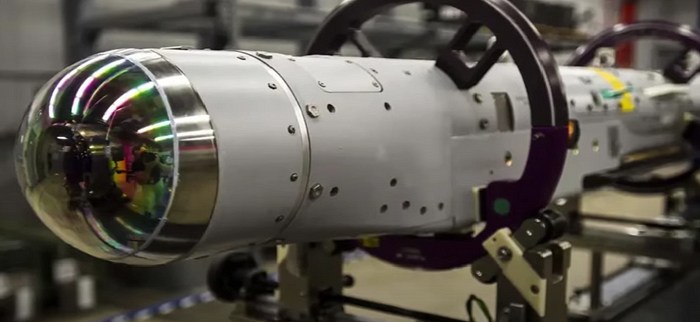StormBreaker: A Smart Bomb for All-Weather Warfare

The StormBreaker bomb, formerly known as the Small Diameter Bomb II, is a new air-launched weapon that can strike moving targets in any weather condition, day or night. Developed by Raytheon Missiles & Defense, the StormBreaker is designed to meet the military’s need for a low-collateral-damage weapon that can engage multiple threats at long range.
What is the StormBreaker?
The StormBreaker is a 204-pound glide bomb that can be carried by various fighter jets, bombers, and drones. It has a range of up to 69 miles and can fly at speeds of up to Mach 1.6. It uses a combination of GPS, inertial navigation, data link, and a tri-mode seeker to find and track its target. The seeker consists of a millimeter wave radar, an infrared camera, and a semi-active laser, which allow the bomb to operate in adverse weather, smoke, dust, and jamming environments. The bomb also has a two-way datalink that enables the operator to update the target location or abort the mission if necessary.
The StormBreaker has a shaped charge warhead that can penetrate armor, vehicles, buildings, and other hard targets. It also has blast and fragmentation effects that can kill or injure personnel and damage soft targets. The bomb is designed to minimize collateral damage by using a small explosive charge and a precise guidance system. The bomb can also discriminate between different types of targets and prioritize the most important ones.
Why is the StormBreaker needed?
The StormBreaker is intended to address the challenges posed by modern warfare, where adversaries use mobile and dispersed forces, hide in complex terrain, and employ countermeasures to evade detection and attack. The StormBreaker gives the warfighter the ability to strike time-sensitive and moving targets with high accuracy and reliability, regardless of the weather or visibility. The StormBreaker also reduces the risk to friendly forces and civilians by limiting the blast radius and avoiding unintended casualties.
The StormBreaker is part of the Small Diameter Bomb family of weapons, which aim to increase the number of bombs that can be carried by a single aircraft and reduce the logistics burden. The StormBreaker is compatible with the BRU-61/A carriage system, which can hold four bombs in the space of one conventional bomb. This means that an F-15E Strike Eagle can carry up to 28 StormBreakers, an F-35 Lightning II can carry up to eight internally, and an F/A-18 Super Hornet can carry up to 12 externally. The StormBreaker can also be integrated with other platforms, such as the B-1B Lancer, the B-2 Spirit, the B-52 Stratofortress, and the MQ-9 Reaper.
What is the status of the StormBreaker?
The StormBreaker program began in 2006 as a joint effort between the US Air Force and the US Navy. Raytheon won the contract for the engineering, manufacturing, and development phase in 2010, after competing with a team of Boeing and Lockheed Martin. The program completed the critical design review in 2011 and the milestone C decision in 2015, which authorized the low-rate initial production. The program has conducted over 140 flight tests and demonstrations, involving various scenarios, targets, and platforms.
The StormBreaker achieved initial operational capability with the US Air Force in September 2020, and with the US Navy in February 2021. The weapon is currently deployed on the F-15E and the F/A-18E/F, and is expected to be integrated on the F-35. The US Department of Defense has ordered more than 2,000 StormBreakers so far, and plans to acquire up to 17,000 in total. The weapon has also attracted interest from international customers, such as Italy, which announced its intention to buy the StormBreaker for its F-35s in January 2024.
What are the benefits of the StormBreaker?
The StormBreaker is a versatile and effective weapon that can enhance the capabilities and survivability of the US and allied forces in various operational environments. The StormBreaker can:
- Provide a long-range, stand-off option for engaging high-value and time-critical targets, such as mobile missile launchers, radar sites, command and control centers, and enemy aircraft.
- Enable a single aircraft to attack multiple targets simultaneously or sequentially, increasing the efficiency and flexibility of the mission.
- Operate in all-weather conditions, day or night, overcoming the limitations of traditional weapons that rely on clear line of sight or laser designation.
- Employ a smart seeker that can adapt to different situations, switch between modes, and fuse data from multiple sensors, ensuring a high probability of hit and a low probability of miss.
- Reduce the collateral damage and the risk of fratricide by using a small warhead and a precise guidance system, as well as a datalink that allows the operator to abort or redirect the weapon if needed.
- Increase the payload and the endurance of the aircraft by using a compact and lightweight design that allows more bombs to be carried per sortie and less fuel to be consumed.
Conclusion
The StormBreaker is a state-of-the-art weapon that can provide a decisive edge to the US and its allies in the 21st century battlefield. It is a networked, all-weather weapon that can engage moving and stationary targets with high precision and low collateral damage. It is a game-changer that can enable new tactics and strategies for air-to-surface warfare.
